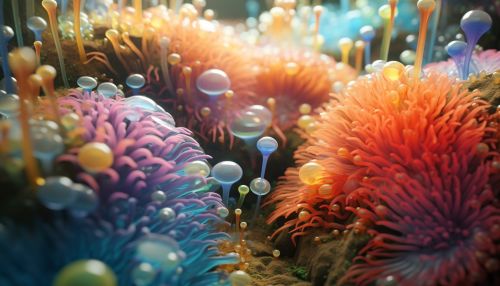Human Microbiota
Introduction
The human microbiota refers to the trillions of microorganisms that inhabit the human body. These include bacteria, archaea, fungi, and viruses, with bacteria making up the majority. The human microbiota is involved in numerous physiological processes, including digestion, immune response, and the production of vitamins.
Composition of the Human Microbiota
The human microbiota is composed of a diverse array of microorganisms. The majority of these are bacteria, with the human body hosting approximately 100 trillion bacterial cells. This is ten times the number of human cells in the body. The most abundant bacteria belong to the phyla Firmicutes and Bacteroidetes, although Proteobacteria, Actinobacteria, and Verrucomicrobia are also present in significant numbers


.
Archaea, while less abundant than bacteria, are also a significant component of the human microbiota. Most archaea in the human body belong to the phylum Euryarchaeota, particularly the genus Methanobrevibacter. Fungi, primarily yeasts, are another component of the human microbiota, with the most common being Candida species. Finally, the human microbiota also includes viruses, most of which are bacteriophages – viruses that infect bacteria.
Distribution in the Human Body
The human microbiota is not evenly distributed throughout the body, but rather varies in composition and abundance depending on the specific location. The gut, particularly the large intestine, is the most densely populated site, hosting a diverse array of microorganisms involved in processes such as digestion and immune response. The skin, oral cavity, and vagina are other major sites of the human microbiota.
Gut Microbiota
The gut microbiota is the most well-studied component of the human microbiota. It is involved in numerous physiological processes, including digestion, immune response, and the production of vitamins. The gut microbiota also plays a role in the development of the immune system, with studies showing that germ-free animals have underdeveloped immune systems compared to those with a normal microbiota.
Skin Microbiota
The skin microbiota is another major component of the human microbiota. It varies in composition depending on the specific location on the skin, with areas such as the armpits and groin having a different microbiota compared to areas like the forearm. The skin microbiota plays a role in protecting against pathogenic microorganisms and in the maintenance of skin health.
Oral Microbiota
The oral microbiota is composed of a diverse array of microorganisms, including bacteria, fungi, and viruses. It plays a role in oral health, with imbalances in the oral microbiota being associated with conditions such as periodontal disease and oral cancer.
Vaginal Microbiota
The vaginal microbiota is composed primarily of lactic acid-producing bacteria, which help to maintain a low pH in the vagina and thus protect against pathogenic microorganisms. Imbalances in the vaginal microbiota can lead to conditions such as bacterial vaginosis.
Role in Health and Disease
The human microbiota plays a crucial role in maintaining health. However, imbalances in the microbiota, known as dysbiosis, can contribute to a variety of diseases. These include gastrointestinal disorders such as inflammatory bowel disease and irritable bowel syndrome, metabolic disorders such as obesity and type 2 diabetes, and neurological disorders such as autism and Alzheimer's disease.
Conclusion
The human microbiota is a complex and diverse community of microorganisms that plays a crucial role in human health. Understanding the composition and function of the human microbiota, as well as the factors that can disrupt it, is an important area of research with potential implications for the prevention and treatment of a variety of diseases.
